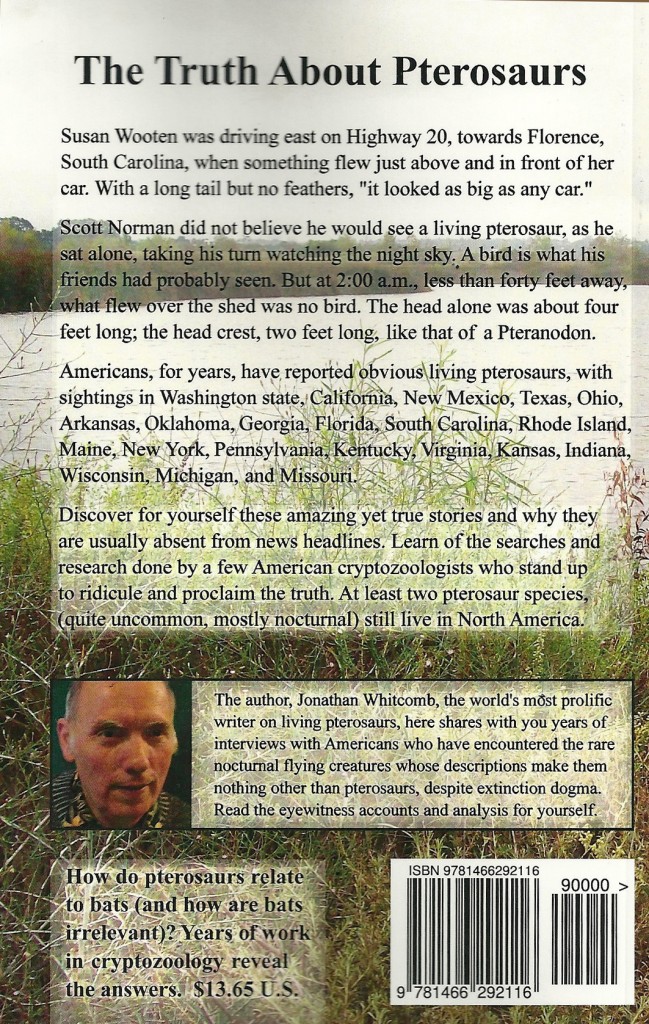What’s wrong with the idea that sightings of apparent living pterosaurs are misidentifications of birds or bats? On the surface, it sounds reasonable; after all, our Western culture is drenched in the idea that all pterosaurs and dinosaurs became extinct many millions of years ago. But look just beneath the surface and we find problems.
Specific American cryptozoologists have interviewed specific eyewitnesses, during the past seventeen years: scores of eyewitnesses have been interviewed. So what do critics mention about eyewitnesses? They mostly mention theoretical sightings or two or three that are more than a hundred years old. What a problem! Critics often ignore critical witnesses, those whose credibility has attracted cryptozoologists who interview them. So why do critics mostly ignore those important eyewitnesses? What other explanation but the obvious? They do not have any reasonable reply to the testimonies of Duane Hodgkinson and Brian Hennessy, eyewitnesses who saw, in clear daylight, large or giant long-tailed featherless flying creatures with head crests. Hodgkinson does not have visual problems; he is a flight instructor with many thousands of hours of flying time. Hennessy is not crazy; he is a professional psychologist.
Let’s look closer at these two sightings, watching for any possibility of a misidentification. Hodgkinson’s “pterodactyl” was clearly visible in a clearing just west of Finschhafen, New Guinea. Although he and his army buddy were in the same clearing as the creature that soon flew away, they were at opposite sides; but the clearing was small, so the creature was close. Hodgkinson estimated the tail of the creature was “at least” ten to fifteen feet long. So how could that creature be a misidentified bird or bat? Any suggestion of a misidentification, in this case, would likely sound like a joke; no it was a giant Rhamphorhynchoid pterosaur, strange as that may sound.
What about Hennessy? He described the “prehistoric” flying creature that he saw on Bougainville Island, New Guinea: long tail, no sign of feathers, head “disproportionately large compared to the body.” His choice of identification sketches (survey examination) resulted in a head sketch very similar to the one chosen by Hodgkinson. They probably observed the same species of pterosaur.
What if these two eyewitness sightings were just weird flukes? Well, I interviewed several natives on Umboi Island, Papua New Guinea, in 2004, with similar results. Gideon Koro answered my question about the length on the tail of the ropen that terrified him and his friends years earlier: seven meters (about twenty-two feet). That was no fruit bat. No way!



